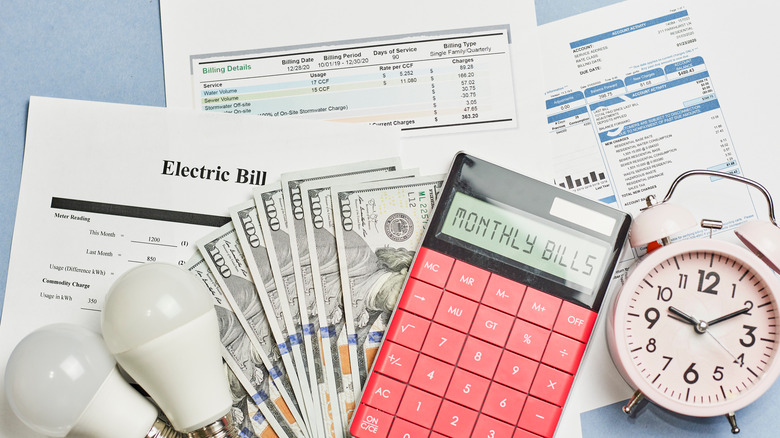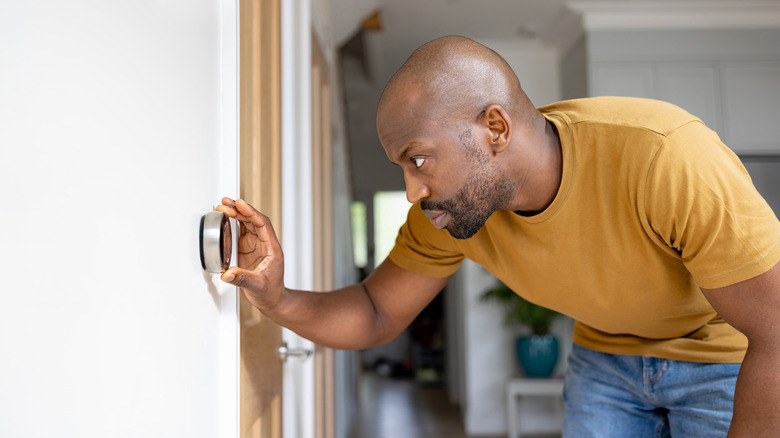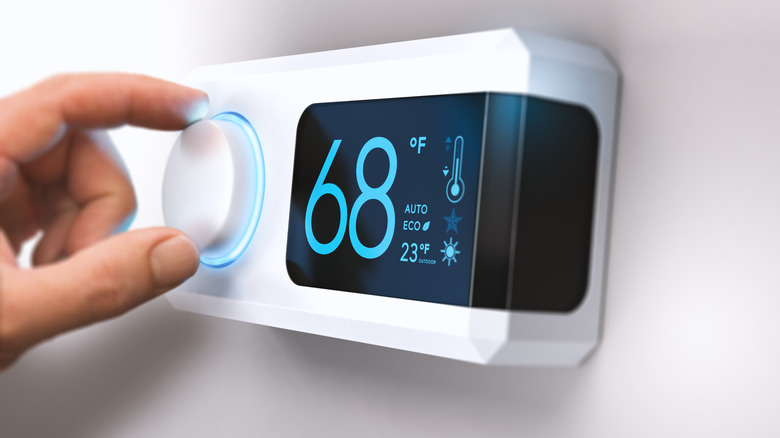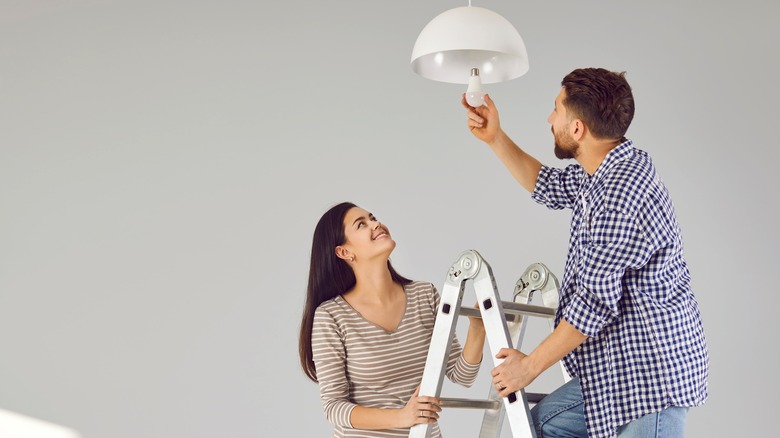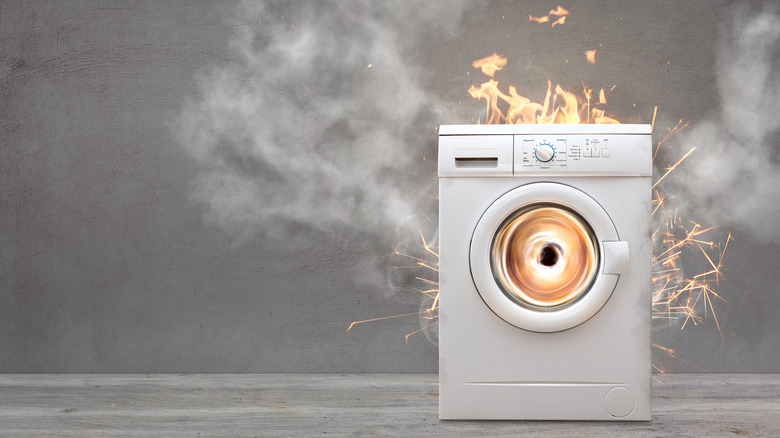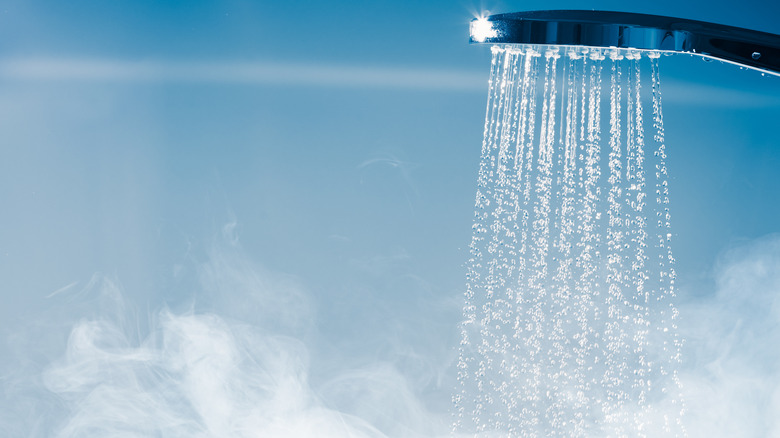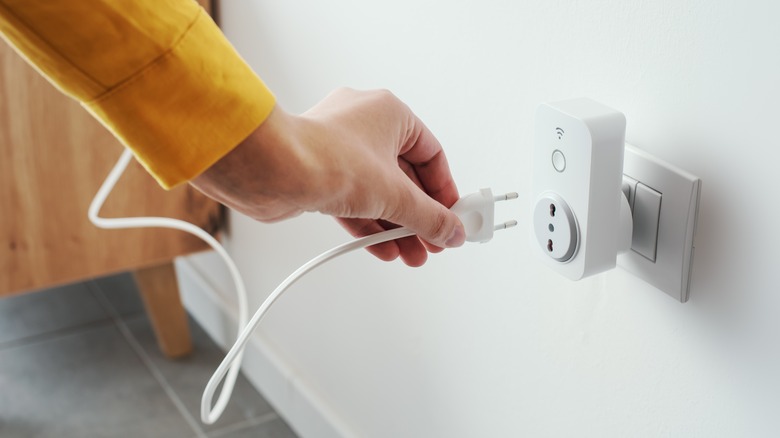6 Common Mistakes That Are Increasing Your Electric Bill
It's not your imagination — your electric bill is going up. According to the U.S. Energy Information Agency, residential electric bills saw a 5% increase in 2022 after adjusting for inflation — the largest increase since 1984. We don't yet have data from this year, but there's no reason to believe prices are falling. While we know how much our fixed bills, like mortgages and rent, will cost from month to month, the electric bill tends to be one of the great unknowns.
We may think we're doing the right things to control our bills, such as turning off the lights when we're not in a room and unplugging devices we're not using, but we're still often surprised when the electric bill arrives. You might not realize how easy it is to waste electricity in our homes, which contributes to the often sky-high prices you see on your bill. The good news is you can make a few adjustments to help lower your electric bill, leaving you with more money in your pocket at the end of the month.
Overuse of heating and cooling systems
Depending on where you live, you've probably noticed that your electric bill increases substantially in the summer or winter months. We rely on our HVAC systems to regulate the indoor temperature, ensuring our comfort year-round. They're one of the marvels of modern life; they also account for about half of the average home's energy usage. Therefore, if you want to lower your electric bill, this is where you should start. We're not suggesting you give up on AC and heat altogether. However, making even small adjustments to your thermostat could make a big difference in how much you pay each month.
Many people keep their thermostats at a constant temperature whether they're at home or not, leading to their HVAC running more than necessary. If you're not going to be at home for a few hours, you can turn off your AC or set it to a higher temperature to use less power while you're gone. However, be careful about turning off your heat for extended periods because you may use more energy reheating your home than you would have, letting your HVAC system run while you are gone. Supplementing your AC with a ceiling and plug-in standalone fans can help you cut down on your AC use in the summer. In the winter, adding a few more blankets to the bed and layering while you're up and about can help you stay warm without overdoing it with the heat.
Not using a programmable thermostat
If you're not using a programmable thermostat, it's time to make the switch — your bank account will thank you. Using a programmable thermostat is the easiest way to keep yourself from overusing your home's heating and cooling systems. These smart thermostats allow you to change your temperature by a few degrees, depending on the time of day. According to the U.S. Department of Energy, turning back your thermostat by 7 to 10 degrees for eight hours a day could save you up to 10% on your heating and cooling bill annually.
With a programmable thermostat, you won't even have to think about doing this; the thermostat will take care of it automatically. And if, by chance, you leave home without programming the thermostat or want to adjust the temperature while you're away, you can do that with an app on your smartphone from anywhere with an internet connection. Some programmable thermostats will learn from your behavior and adjust the temperature to the most efficient settings without you doing anything.
Inefficient lighting practices
We all know not to leave the lights on in a room we're not in; however, many of us don't spend much time thinking about how the types of light bulbs and light fixtures we use can increase our electric bill. Although the U.S. recently banned the sale and manufacture of incandescent lightbulbs to get Americans to use more energy-efficient options, most of us still have a long way to go when choosing the most cost-effective and energy-saving lighting.
While the ban doesn't prohibit you from using incandescent bulbs you already have, you may want to think twice about doing so because they're far less efficient than LED or energy-saving light bulbs. Although you'll spend more upfront on LED bulbs, they use 75% less energy and last 25 times longer than incandescent bulbs, a significant savings you'll see on your electric bill.
If you're like most people, you probably use a big overhead light to brighten most of the rooms in your home. What you might not know is this habit could be causing you to spend extra money on your electric bill. Using lamps to brighten the parts of your home where you need more light is a more energy-efficient option. Doing so lets you use light bulbs that require less energy and control your energy use more easily, which can help you save money.
Poor appliance management
Some of us think we're saving money by keeping our appliances around as long as we can, but if we want to lower our electricity bill, our old appliances might be holding us back. Typically, the older an appliance is, the more energy it consumes. That's because as its hardware ages, older appliances need more energy to work properly. Televisions, washing machines, and refrigerators are some of the most common offenders when it comes to old appliances increasing an electric bill. Newer appliances have benefited from technological advancements and are much more energy-efficient than older ones.
Replacing old appliances is a significant expense and may not be a priority if you're operating on a tight budget. However, it's important to keep in mind that although you won't see savings immediately after replacing outdated appliances, you will see significant savings in the long term. Besides replacing old appliances, regular maintenance is important to ensure your appliances aren't draining your pocketbook. Regularly cleaning appliance filters and checking to see if they're functioning correctly can go a long way toward ensuring they're not running up your electric bill.
Excessive use of water heating
From taking a long hot bath to washing clothes, we use a lot of hot water in our day-to-day lives, often without thinking twice about it, and that's a big mistake for those of us who'd like to save money on our electric bill. About 18% of the energy used in a typical household comes from water heating, making it the second biggest energy expense in a home. Many habits, like taking long showers and setting the temperature high on water heaters, contribute to this high energy use because every degree of extra heat requires more energy, driving up our electric bills.
Even when you're not using hot water, your water heater is constantly using energy while in standby mode. Lowering your water heater's temperature setting can lead to substantial energy savings without sacrificing comfort. You can also use low-flow shower heads, cut back on long showers, and insulate your water heater and pipes to lower water heating costs, reduce heat loss, and improve efficiency. If you still find your water heater is using too much energy after trying these things, consider replacing it with a tankless water heater. Tankless water heaters provide hot water as needed without the constant energy draw of keeping a large tank hot, which could result in a 27 to 50% energy savings.
Not using energy management tools
Smart devices and systems have become a part of our daily lives. If you're using these tools to manage your home's energy usage, you're likely missing out on opportunities to reduce your energy consumption and lower your electricity bills. The U.S. Environmental Protection Agency (EPA) created the Energy Star Smart Home Energy Management Systems program to help consumers identify products that simplify, reduce, and manage home energy consumption more efficiently. This program includes smart thermostats, lighting, and appliance controls that meet strict energy efficiency guidelines set by the EPA.
You can use these tools to gain insight into your home's energy consumption and make adjustments as necessary. They provide real-time data and analysis of your home's energy use, which can lead to significant savings on your electric bill. For example, smart lighting fixtures and bulbs use up to 90% less energy than traditional incandescent bulbs and can be programmed to turn off automatically when you're not home. Similarly, smart plugs can turn off standby power to devices when not in use, and smart thermostats can monitor and adjust your home's temperature even when you're away. Using these smart technologies could help you use an average of 30–40% less energy.
